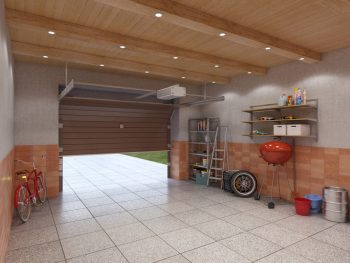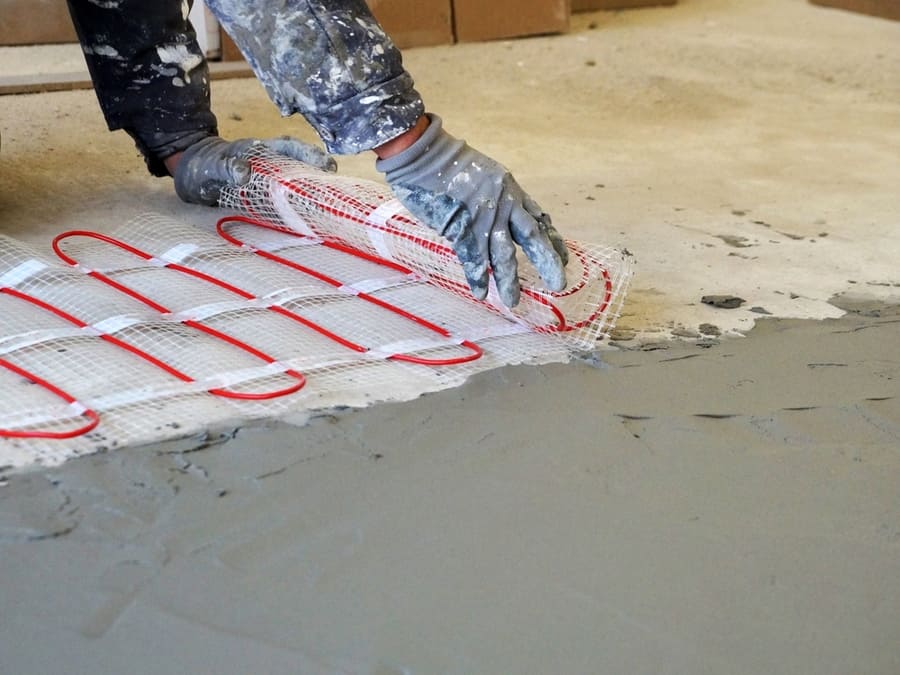
If you’ve been thinking about heating your garage floor this winter but need help figuring out where to begin, don’t worry.
I’ll give you step-by-step guidance, from figuring out what type of insulation material is necessary for the job to quickly installing a high-quality heated floor system.
My tips will help keep your feet warm during those cold winter months while saving you time and money and increasing your satisfaction when they’re complete.
- Electric heating pads are the most common way to heat a garage floor and are less expensive and more efficient than rugs.
- Rugs can be more expensive but last longer and require less maintenance.
- There are two main types of garage flooring: concrete and tiled. Concrete is the most popular because it’s durable and easy to clean but can be cold in the winter. Tiled garage floors are usually warmer.
Every option has pros and cons, so deciding what is best for your needs is essential.
This article will cover various aspects of heating a garage floor, such as the different types of flooring, the pros and cons, how to install an electric heating system, and tips for maintaining a warm, comfortable garage space.
Different Ways To Heat a Garage Floor

There are a few different ways to heat a garage floor:
1. Using an Electric Heating Pad or Rug
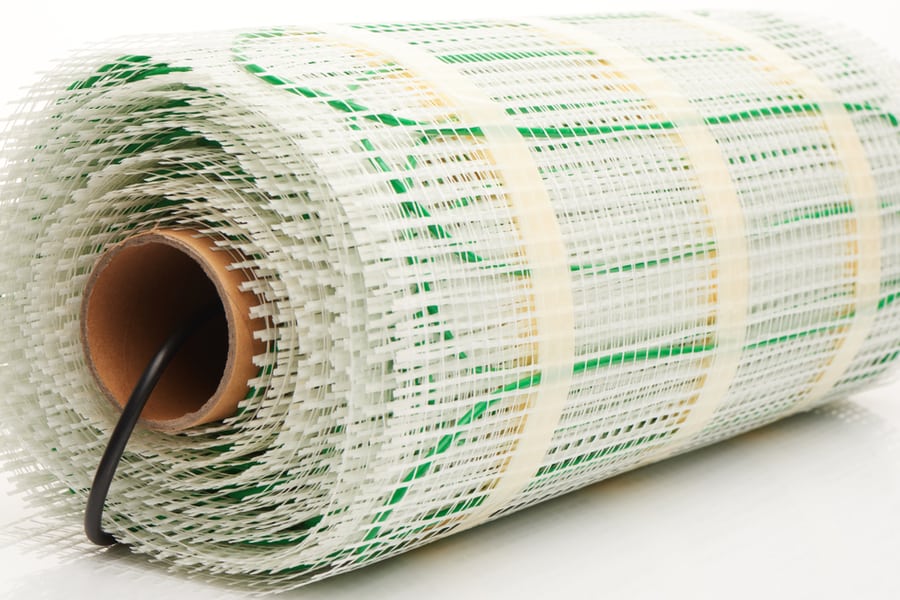
Electric heating pads or rugs offer an efficient way to heat your space but require careful monitoring and energy-saving measures. Installing an electric heating system requires some skill and knowledge, so it’s essential to do your research before starting the job.
After installation is complete, regular maintenance should still take place to keep your heated space functioning properly. This includes checking for damaged or malfunctioning parts, replacing worn wiring or insulation, and keeping the thermostat settings up-to-date with current weather conditions.
There are two main types of garage flooring: concrete and tiled. Concrete is the most popular because it’s durable and easy to clean, but it can be cold in the winter. Tiled garage floors are usually warmer but may not be as stable as concrete.
You can also choose to have a heated floor installed by a contractor or build your own using a thermostat and electrical box.
Electric heating pads are the best option if you’re looking for an affordable way to heat your garage. They’re cheaper than rugs and don’t require any maintenance besides occasional cleaning.
However, electric heating pads could be more efficient and wasteful if used correctly.
Carpets are more expensive upfront but last longer and require less maintenance than electric heating pads. They’re also warmer in the winter but may not be as durable as concrete.
2. Add Radiant Heating Systems
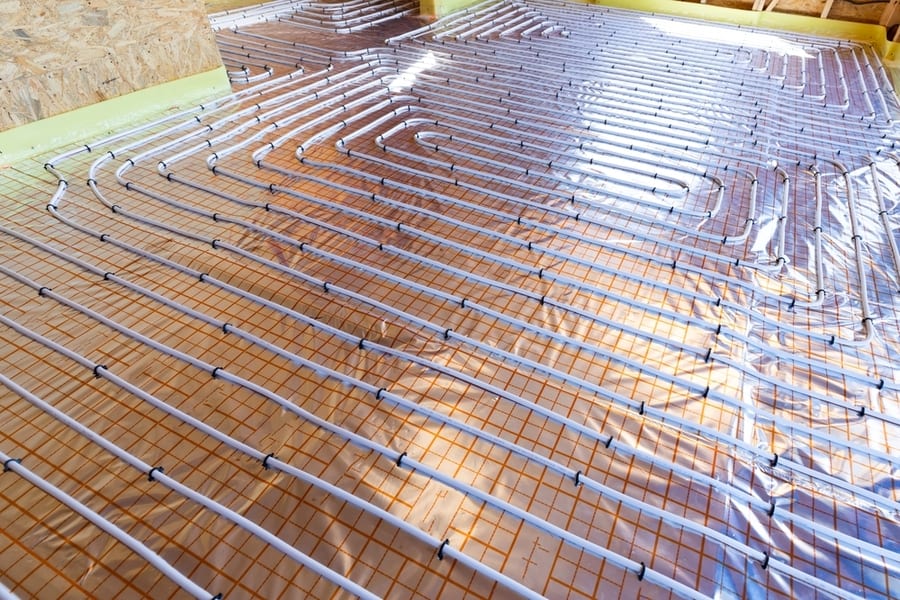
Radiant heating systems are an efficient, cost-effective way to heat the interior of a garage.
The most popular types of radiant heating systems are installed underneath floors or as panels in walls and ceilings.
These systems use infrared radiation to directly heat surfaces, rather than the air within the space, resulting in more efficient energy use.
3. Space Heater

Space heaters can be a great way to quickly warm up a big space, providing you with adjustable temperature control and convenience.
However, it’s important to ensure that your home has enough outlets to power them – otherwise, they may not provide the same reliable heating as other methods.
4. Electric Baseboard Heater

Electric baseboard heaters provide an economical and efficient way to warm those hard-to-heat rooms.
They are compact yet deliver a steady temperature without needing frequent adjustments – all while keeping energy costs low!
Ideal for smaller spaces or supplementing traditional heating systems, electric baseboard heaters offer reliable comfort with the convenience of digital control settings.
5. Oil Furnace

Oil furnaces offer superior durability and consistent temperatures but require a more significant upfront investment than other heating options.
Before installing this furnace, remove old insulation to maximize its efficiency.
Pros & Cons of Heating a Garage Floor

- Providing warmth on cold days and an added layer of insulation for when you’re working in the garage
- Heated floors also provide a safer workplace, with less risk of slipping or falling due to icy surfaces.
- Heated floors are generally easier to maintain than other heating systems, such as radiators or baseboard heaters.
On the other hand, there are some cons associated with heated garage floors.
- Suppose you live in an area with extreme temperatures (such as very hot summers). In that case, you’ll need to be mindful of potential overheating issues associated with heated floors during these times of the year.
- One potential downside is installation costs; electric-driven systems can be quite expensive to install and maintain over time.
Heating Method To Avoid
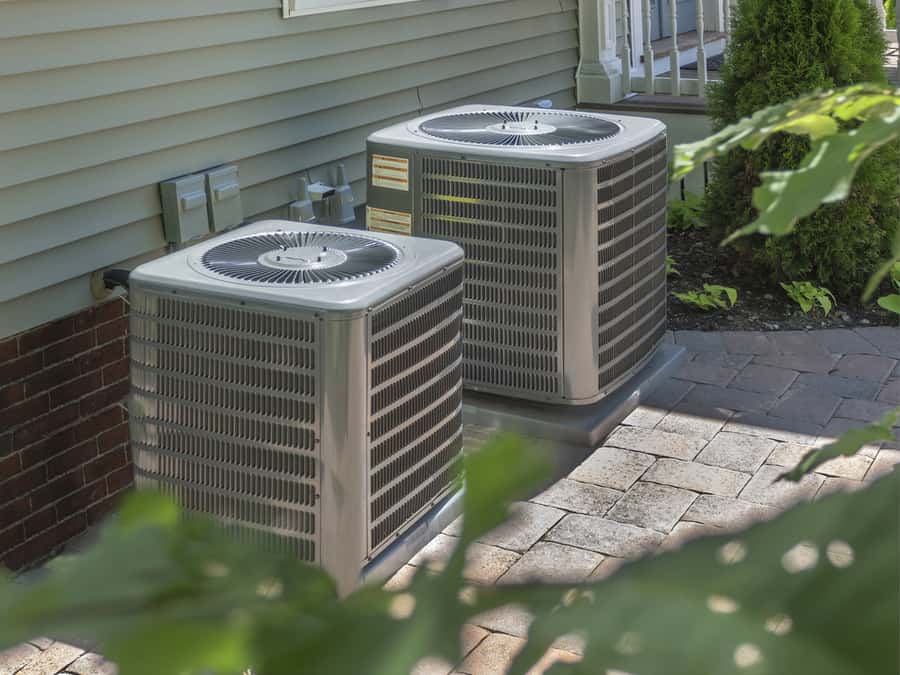
Rather than attempting to expand your HVAC system into the garage, you are highly recommended to refrain from doing so.
According to most local regulations, this is because it can be dangerous and illegal.
If done incorrectly, these connections may allow toxic fumes from the garage to enter your home, cause health problems for you and your family, and contribute to degraded indoor air quality.
Furthermore, in many cases, such an extension will not be able to handle the extra load that it would be expected to bear, leading to further issues.
Conclusion
Your garage floor heating system will provide years of trouble-free operation with proper maintenance.
So if you’re thinking about adding extra warmth to your garage this winter, consider one of these floor heating options.
Have you installed a garage floor heating system? What type of flooring do you use in your garage? Share your experiences and tips in the comments below.
Frequently Asked Questions
What Is the Most Efficient Heating for a Garage Floor?
The most efficient heating for a garage floor is a radiant heating system.
This system uses infrared radiation to directly heat surfaces, rather than the air within the space, resulting in more efficient energy use.
Is It Cheaper To Heat a Garage Floor With Gas or Electric?
When heating a regular two-car garage, electricity tends to be more costly than gas.
Utilizing a 240 Volt power source for an electric heater can be up to 20% dearer than running a vented forced air gas heater and 40% higher in cost than operating a vent-free infrared gas heater.
Furthermore, electric heating apparatuses are typically less energy efficient when compared to burning fuel-based systems due to the higher price of electricity.
Moreover, electric heaters often require additional expenditure on installation, which adds further costs as opposed to most gas heaters which are easy and inexpensive to install.






